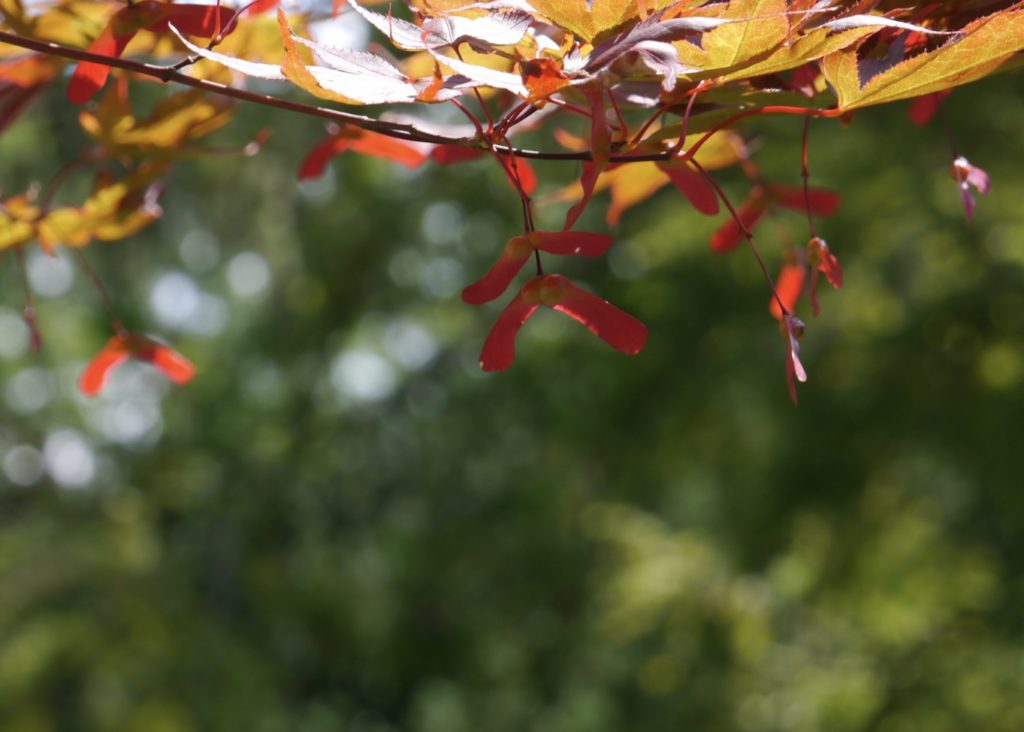
“Mindfulness means learning to pay attention to what’s happening in the present moment. In the mind, body, and external environment, with an attitude of curiosity and kindness. Mindful awareness training tunes the region of the brain called the posterior insula. This is the place of our moment by moment awareness.” ~ Meg Salter, Mind Your Life
Meg Salter’s book, Mind Your Life, is full of practical exercises, both sitting and movement, for bringing greater moment by moment awareness to your life. There are many benefits to practicing mindfulness. Here are just a few – reducing stress, feelings of well-being, greater empathy which leads to better relationships, increased emotional intelligence and resilience, and more focus on what’s important.
According to Salter, there are three fundamental attentional skills which can be developed: concentration, sensory clarity, and equanimity.
- Concentration – Selective attention through an effort of will. Choosing where we place our attention. Focus on what matters. Noticing habitual patterns of distractions and preconceptions. Realizing that we see the world in light of those preconceptions. Not letting our blind spots control us.
- Sensory Clarity – Perceiving with more vividness and seeing subtle details. Feeling and naming emotions. Getting in touch with your body.
- Equanimity – Allowing sensory experiences to come and go through surrender of will. Letting things be as they are. Responding from a deeper level. Developing empathy.
Since attention is a contemplative habit, I wondered whether some of Salter’s exercises could be used in preparation for or while photographing as a way of enhancing our perceptions and what we choose to photograph. There are many different types of exercises in the book, but here’s a simple one to start, called Focus Out. Try it on your next photo walk.
A Variation on the Focus Out Exercise
1. Go for a wander (no destination, at least 20 minutes).
2. For the first five minutes, feel out. Notice body sensations. What does the air feel like? How are you feeling inside? Is something nagging at you? What’s your emotional state? How does your body feel? Do you have any itches, aches, pains, fatigue, hunger? Accept it all. Feel your feet on the ground and the movement of your arms. Notice your breath.
3. For the next five minutes, hear out. Notice the sounds around you and within you. Notice how they rise and then fall away. Think of all the sounds together as one big symphony of life.
4. For the next five minutes, see out. Let your attention wander. Notice what comes to your attention, without rejecting anything. Photograph what you feel needs your attention.
5. For the last five minutes, focus out on all. Notice how your body feels now, the sights and sounds and smells. Take it all in and appreciate this time you’ve taken.
As an alternative or addition, do this exercise as a sitting practice before photographing. Times for each step are not set in stone. Adapt according to the time you have.
My Mindfulness Walk
I did this exercise today. It’s a gorgeous September day and all of the windows are open. It’s sunny and warm, oh and there’s also a loud machine that’s been running for hours now non-stop at a home down the street. It was starting to get to me.
So, I sat and did the exercise at home first, giving about two minutes for each step. When it came to noticing how I felt, the sound outside lessened because my attention was elsewhere. I noticed the agitation I felt and took a deep breath. When I did the hear out section, I let the sound of the machine in without rejecting it and then tried to notice if I could hear anything else. I could! There were some birds singing and there was a tingly hum in the air underneath everything else. Otherwise, there was silence.
Then, I went out to wander. I realized that I normally would try to walk away from the loud noises, so instead I walked towards them, which also took me to a busier street. I found that there were many loud noises, other machines, car traffic and they all mixed together. I was still seeing and noticing the quieter things – a family of mushrooms at the side of a fence, a squirrel scurrying up a tree to get away from me, and the breeze blowing grasses through the slats in a fence.

I realized that mindfulness practice helps me to accept what is, and not let things that are out of my control take over my life.
** Books mentioned have Amazon affiliate links, meaning I make a few cents if you purchase through my link. I only recommend books that I’ve read.
Read: David Cain’s The Big Three Benefits of Daily Mindfulness Practice at Raptitude
The last phrase says it all, Kim: “Not letting things that are out of my control take over my life.” Mindfulness is a wonderful practice, especially when we’re on our own. I love the images you found and how you noticed the quieter things amongst the noise around you.